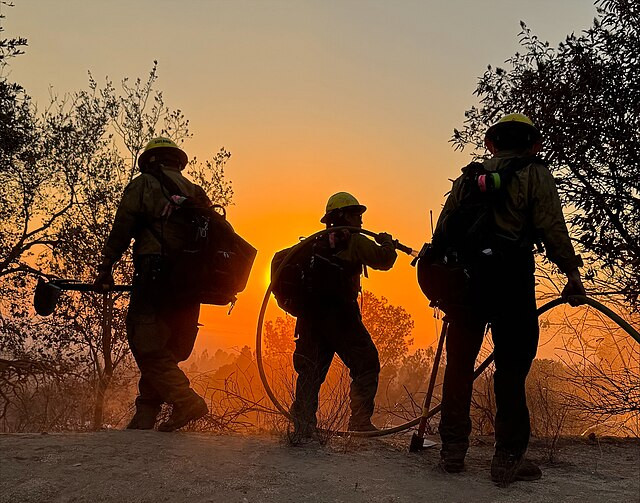A rapidly growing wildfire erupted north of Los Angeles on Wednesday, consuming over 10,000 acres by nightfall and forcing the evacuation of 31,000 residents as extreme weather conditions fueled the blaze. Dubbed the Hughes Fire, it is the largest and fastest-moving wildfire to hit Southern California since the Palisades and Eaton fires earlier this month.
The fire, which began just before 11 a.m. near Castaic Lake, had grown to 10,176 acres by late Wednesday evening with containment at 14%, according to the California Department of Forestry and Fire Protection (Cal Fire). The blaze has yet to destroy any structures but continues to threaten homes and infrastructure as it spreads through the dry terrain.
"It remains a difficult fire to contain, but we are getting the upper hand," Los Angeles County Fire Chief Anthony Marrone said during a press briefing.
The fire is being driven by intense Santa Ana winds, which are expected to worsen overnight. The National Weather Service has issued a red flag warning for much of Los Angeles and Ventura counties, cautioning that wind speeds could reach 50 mph, with gusts up to 70 mph in higher elevations. The conditions, combined with record-low humidity levels of 2% to 10%, have created a perfect storm for rapid fire spread.
"New or existing fires may grow rapidly with extreme fire behavior," the National Weather Service warned.
Mandatory evacuation orders are in place for areas surrounding Castaic Lake, with additional warnings issued for parts of Santa Clarita, a city of approximately 220,000 residents located 30 miles north of downtown Los Angeles. Schools, including Northlake Elementary and Castaic High, have been closed, and a temporary evacuation center has been set up at Valencia High School.
Evacuations also extend to the Pitchess Detention Center, an all-male jail complex near the affected area. Interstate 5, a critical north-south highway, was temporarily shut down in both directions, though it has since been reopened for emergency vehicles.
More than 4,000 firefighters, supported by 20 engines from Cal Fire and eight aircraft from the California National Guard, are battling the blaze. State resources have been deployed to assist federal crews working in Angeles National Forest.
The Hughes Fire is spreading south of Castaic Lake, raising concerns that it could encroach on more densely populated areas and cross into Ventura County. "You can see how receptive the vegetation is, how extremely dry it is, and how easily this fire is spotting across the landscape," UCLA climate scientist Daniel Swain said during a briefing.
Southern California is experiencing an unprecedented dry start to its wet season, with many areas recording their lowest rainfall levels since May. The extreme dryness has left vegetation highly flammable, exacerbating the risk of large-scale fires.
The volatile conditions are partially attributed to climate change and hydroclimate whiplash-a phenomenon in which periods of intense rainfall are followed by extended droughts. Meteorologists attributed the extreme weather conditions, including dry offshore winds and low humidity, to cold air moving into the Great Basin, creating favorable conditions for wildfires across Southern California, according to the National Weather Service.
An incoming cold storm system is expected to bring relief to the region over the weekend, with forecasts predicting up to an inch of rain in mountainous areas. While the precipitation may temporarily slow fire activity, it is unlikely to end the fire season entirely.
California Governor Gavin Newsom acknowledged the severity of the situation, stating that state resources had been mobilized to provide additional support. "We will continue to monitor the situation closely and provide the federal government with whatever it needs to extinguish this fire," Newsom said.






